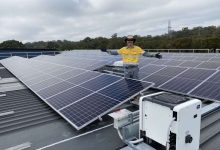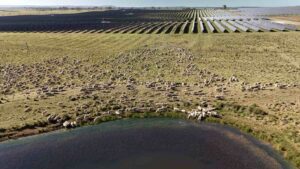Amid the South Australia-led race to better manage thousands of megawatts of residential rooftop solar within a rapidly changing grid, a Queensland network trial focusing on accommodating more, and smarter commercial solar has quietly shown the way on how it may work for consumers.
The Energy Queensland-led Cleveland Solar Dynamic Operating Envelope (DOE) Trial was shortlisted last month by Energy Networks Australia for its 2020 Industry Innovation Award, alongside efforts from Western Power, Transgrid (NSW), and SA Power Networks – the latter for its nation-leading VPP Grid Integration trial.
And while VPP trials, new inverter standards, and most recently “dynamic” or “flexible” control trials in South Australia and Victoria tackle Australia’s huge and booming residential solar resource, the Energy Queensland has zeroed in on a local level problem that has discouraged many C&I customers from installing solar, due to strict rules preventing any daytime exports at all.
“Commercial and industrial customers are installing solar PV at increasing rates, and this can have implications for the network,” Energy Queensland explained in this LinkedIn post in September.
“The traditional network response has been to limit the amount of energy these customers can export, to minimise the impact to the network. This however, limits the value these customers can extract from their solar panels.”
The DOE trial that has been nominated for the award was based out of the operational site at Energex’s Cleveland Depot, and initially monitored just one 50kW commercial solar array.
Using an innovative platform that retrieves real-time data from network monitors polled each minute, it allowed an operating envelope to be calculated for the site based on current network conditions.
A continually updated DOE was then published to a webpage monitored by an IoT Gateway installed onsite – a one-way broadcast approach that kept things simple and allowed for swift action and minimisation of cyber security risks.
The software processed site data to determine if PV generation levels should be decreased based on the existing site load and what was going on in the operating envelope and, depending on the supply-demand equation, the commercial solar system’s PV inverter could be sent a reduced generation limit.
The experiment was a resounding success, providing a range of allowable export values which the local network could accommodate based on real-time conditions – and the system was rarely completely blocked from export. The trial is now being expanded to four more sites.
Even better, the trial required no complicated changes technology, technology standards or energy market rules, but rather a combined brains trust of stakeholders including engineering firms, electrical installations, programming, security and communications.
“It’s a really exciting piece of work that the guys have done,” said Energy Queensland’s executive general manager of engineering, Peter Price, in an interview with One Step on Wednesday.
To read the full story on RenewEconomy sister site One Step Off The Grid click here…






